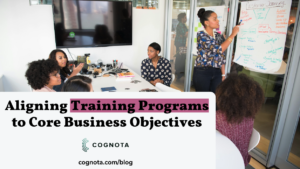Instructional designers, and by extension the organizations in which they work, want learning experiences to truly resonate with employees.
Yet, oftentimes, courses fall short. Despite beautiful design work, providing support for the most in-demand industry skills as requested by the same learners, courses often just don’t accomplish what they set out to achieve.
Of course, the feedback obtained from learners at the conclusion of the course or assessment can provide insights, which can propel the team to make improvements.
However, what if the feedback process started before the course was built? This is not concerning the actual skills or knowledge requested, but rather, an assessment of the learners themselves.
By capturing a more thorough understanding of the target learner as a person and a professional, instructional designers can build and deliver courses that will more closely align with learner expectations, increasing engagement and success.

Struggling to collect the information you need during the training intake process?
Try this free downloadable training request form template!
What Is a Learner Persona?
A learner persona is a fictional profile that represents the target learner or group of learners for whom you are designing a learning experience.
When developing personas, characteristics such as demographics, education level, professional background, technical skills, training goals, and experience with L&D programs are relevant.
Some L&D teams actually go so far as to create a fictional name for the learner persona along with a stock photo in order to have the most complete idea of the person for whom they are targeting. They aren’t real people, but a full professional background, including some elements of a personal background, can be helpful when designing and developing training.
For anyone who has spent any time in a marketing department in the last few years, learner personas would seem logical because marketers use a similar concept called buyer personas in order to gain a complete understanding of their audiences, prospects, and customers.

Benefits of Learner Personas
Several benefits exist for taking the time to create learning personas for your courses.
1. They provide a deeper level of insight.
Because of the research into the needs, habits, preferences, and skills of your target audience of learners, you will capture a level of insight that you could not possibly get by simply reviewing a training request form—no matter how detailed you make it.
The learner persona you develop may ultimately determine that your core learner would not truly engage with a typical course from your organization and might benefit, for example, from off-the-shelf training provided by their profession.
2. They help you make better design and technology decisions.
Further to the previous point, learner personas can help you design better learning experiences. For example, you might discover that one target learning group prefers only text-based learning experiences, or another group prefers the tone of voice to be funny and irreverent.
Learner personas help instructional design teams make better, and sometimes faster, decisions.
3. They provide consistency for the entire team.
As a “source document” of sorts, the learner persona helps ensure that everyone carries out his or her task with the same “person” in mind.
This can also improve project management, inspiring and motivating team members while reducing friction and disagreements.
4. They ensure that you deliver empathy.
Empathy is an essential element in a Design Thinking framework for eLearning, and it is the first stage of any Design Thinking-based process.
Designing with empathy “requires actually imagining the experience of work, learning, and problem-solving from the learner’s perspective,” explains Pamela Hogle in Learning Solutions magazine. “It requires being aware of and setting aside preconceived ideas about how things should work, how learners should do things, or what they should know, and replacing those ideas with knowledge and understanding of their actual experience.”

Looking to make some strategic changes in your L&D department? Check out this free strategy toolkit:
The Learning and Development Strategy Toolkit
How to Create Learner Personas
Below are a few steps to help you create compelling, effective learner personas.
1. Gather as much information as possible.
The best learner personas are created as a result of both quantitative data (i.e., training intake forms, the LMS, or HR) and qualitative data (i.e., interviews, observations). Even casual conversations with sample learners can be helpful, as you’ll be able to hear their story and better understand what makes them tick.
You may also wish to meet with learners’ supervisors or HR for further background information. Additionally, digging even deeper—industry groups, online platforms, preferred technologies—can all be extremely helpful in developing personas.
2. Analyze it.
Now that you’ve gathered all of your information, analyze and interpret the content. While there might be crossover and consistency of traits among certain learner groups within your organization, look for any trends or outliers.
Your team cannot be all things to all people, so you will need to determine whether certain learner personas merit particular attention and influence more than others.
3. Incorporate into your instructional design frameworks.
Now, you can formalize these learner personas and introduce them into your instructional design framework.
Learner personas could form part of the Analysis phase in ADDIE, for example. When you or your team is stuck on how to present content, or on a design or technology decision, you will always have your learner personas as a reference.
Want to ensure learner personas are part of every training project?
Download this free eLearning Project Plan Template!





